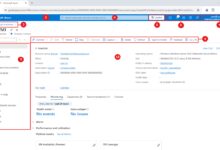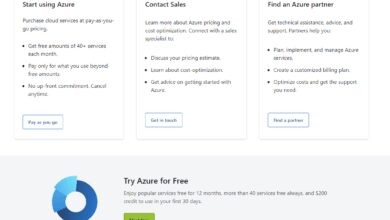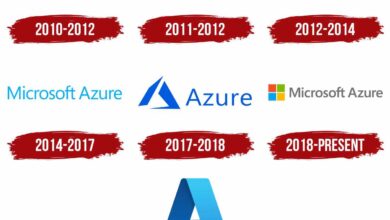Azure Cost Calculator: 7 Powerful Tips to Master Cloud Budgeting
Want to predict your cloud spending with precision? The Azure Cost Calculator is your ultimate tool for estimating, optimizing, and managing Microsoft Azure expenses—before you deploy a single resource.
What Is the Azure Cost Calculator?

The Azure Cost Calculator is an essential online tool provided by Microsoft that allows businesses, developers, and IT managers to estimate the cost of using Azure cloud services before committing to any actual deployment. It’s designed to give users a clear, transparent forecast of monthly or annual cloud expenditures based on their specific infrastructure needs.
How the Azure Cost Calculator Works
At its core, the Azure Cost Calculator operates on a simple principle: input your desired Azure resources, configure them according to your expected usage, and receive a real-time cost estimate. Whether you’re planning virtual machines, storage accounts, databases, networking, or AI workloads, the calculator breaks down pricing by region, service tier, and usage patterns.
- Users select services like Virtual Machines, Blob Storage, or Azure Functions.
- They configure specs such as instance size, data transfer volume, and redundancy options.
- The tool instantly calculates estimated monthly costs, including taxes where applicable.
This proactive approach helps avoid budget overruns and supports informed decision-making during cloud planning phases.
Differences Between Azure Cost Calculator and TCO Calculator
It’s important not to confuse the Azure Cost Calculator with the Azure Total Cost of Ownership (TCO) Calculator. While both are financial planning tools, they serve different purposes.
The Azure Cost Calculator focuses on estimating the cost of Azure services in isolation—ideal for greenfield projects or cloud-native applications. In contrast, the TCO Calculator compares on-premises infrastructure costs with moving those workloads to Azure, factoring in hardware depreciation, maintenance, power, and labor.
“The Azure Cost Calculator is about ‘what will this cost in Azure?’ while the TCO Calculator answers ‘is moving to Azure cheaper than staying on-premises?’
Why Use the Azure Cost Calculator?
One of the biggest challenges in cloud computing is unpredictability in billing. Without proper planning, companies can face shocking invoices due to over-provisioning, idle resources, or unexpected data egress fees. The Azure Cost Calculator eliminates much of this uncertainty by offering a sandbox environment for cost modeling.
Prevent Budget Overruns Before Deployment
By using the Azure Cost Calculator early in the planning phase, teams can simulate various deployment scenarios and identify cost-efficient configurations. For example, choosing between a D-series and B-series VM might seem minor, but over 12 months, the difference could amount to thousands of dollars.
This foresight allows finance and IT departments to align on budgets before any code is written or infrastructure is provisioned. It also supports better communication with stakeholders who need clarity on projected cloud spend.
Support Accurate Cloud Migration Planning
When migrating legacy systems to Azure, it’s critical to understand how existing workloads will translate into cloud costs. The Azure Cost Calculator enables teams to map physical servers to equivalent Azure VMs, estimate storage needs, and factor in networking costs like load balancers and bandwidth.
For instance, a company running 10 physical servers on-premises can use the calculator to model what it would cost to run equivalent Dv3 or Ev3 instances in Azure, including backup, monitoring, and high availability features.
Key Features of the Azure Cost Calculator
The Azure Cost Calculator isn’t just a basic pricing estimator—it’s a robust financial planning engine with several powerful features that make it indispensable for cloud architects and financial analysts alike.
Real-Time Cost Estimation with Dynamic Updates
As you adjust configurations—such as increasing vCPU count, changing storage type from HDD to SSD, or enabling auto-scaling—the calculator updates the total cost in real time. This interactivity makes it easy to experiment with different setups and instantly see the financial impact.
For example, switching from locally redundant storage (LRS) to geo-redundant storage (GRS) doubles the storage cost, which the tool highlights immediately. This transparency empowers users to make trade-offs between performance, durability, and cost.
Multi-Service Integration and Bundled Scenarios
The calculator supports over 100 Azure services, from core compute and storage to advanced offerings like Azure Kubernetes Service (AKS), Cognitive Services, and Azure Synapse Analytics. You can build complex architectures within the tool, combining VMs, databases, networking, and security components into a single cost model.
Microsoft also provides pre-built solution templates such as “Web Application,” “Dev/Test Environment,” and “Disaster Recovery,” which bundle commonly used services together. These templates accelerate estimation and ensure best-practice configurations are considered from the start.
Export and Share Options for Collaboration
Once you’ve built a cost model, you can export it as a CSV file or PDF report, making it easy to share with team members, managers, or clients. This feature is especially useful during budget reviews, procurement processes, or cloud governance meetings.
You can also save your estimates to your Microsoft account, allowing you to revisit and refine them over time as requirements evolve.
How to Use the Azure Cost Calculator Step by Step
Using the Azure Cost Calculator is straightforward, but mastering it requires understanding its interface and capabilities. Here’s a detailed walkthrough of how to create an accurate cost estimate.
Step 1: Access the Tool and Set Your Region
Visit the official Azure Cost Calculator page and select your preferred Azure region (e.g., East US, West Europe, Southeast Asia). Pricing varies significantly by region due to data center costs, taxes, and local regulations, so choosing the correct location is crucial for accuracy.
After setting the region, you can also specify your currency for reporting purposes.
Step 2: Add Services to Your Estimate
Click “Add” to start building your architecture. You can search for services by name or browse categories like Compute, Storage, Networking, Databases, AI + Machine Learning, and more.
- Select “Virtual Machines” to model compute workloads.
- Add “Storage” for blob, file, or disk storage needs.
- Include “SQL Database” or “Cosmos DB” for managed database services.
Each service added appears in your estimate summary with its individual cost breakdown.
Step 3: Configure Service Details for Accuracy
After adding a service, dive into its configuration options. For a Virtual Machine, you’ll choose:
- Instance type (e.g., B2s, D4s_v3, E8as_v4)
- Operating system (Windows or Linux)
- Number of instances
- Uptime (e.g., 24/7, 8 hours/day)
- Auto-shutdown settings
For storage, you’ll set:
- Storage type (Standard HDD, Premium SSD)
- Redundancy (LRS, ZRS, GRS)
- Data transfer volume (in GB/month)
- Number of read/write operations
The more precise your inputs, the more reliable your cost projection.
Advanced Tips for Maximizing the Azure Cost Calculator
While the basic functionality of the Azure Cost Calculator is user-friendly, leveraging its full potential requires some strategic thinking and insider knowledge. Here are advanced techniques to get the most value from the tool.
Model Multiple Scenarios for Comparison
Don’t settle for a single estimate. Create multiple scenarios to compare different architectural choices. For example:
- Scenario A: Use general-purpose VMs with standard SSDs.
- Scenario B: Use memory-optimized VMs with premium SSDs.
- Scenario C: Use spot instances for non-critical workloads.
By comparing these side-by-side, you can identify the most cost-effective option without risking production stability.
Incorporate Reserved Instances and Savings Plans
The Azure Cost Calculator includes options to apply Reserved VM Instances and Savings Plans, which can reduce costs by up to 72% compared to pay-as-you-go pricing.
When configuring a VM, toggle the “Include discounts” option and select a 1-year or 3-year reservation term. The tool will show both the discounted and undiscounted prices, helping you evaluate the ROI of committing to long-term usage.
“Reserving instances is one of the fastest ways to cut Azure bills—always model this in your cost calculator estimates.”
Factor in Hidden Costs Like Data Egress and API Calls
Many organizations underestimate costs related to data transfer (especially egress), API transactions, and management tools. The Azure Cost Calculator allows you to specify:
- Outbound data transfer (e.g., 5 TB/month to the internet)
- Number of API calls for services like Azure Functions or Cognitive Services
- Use of Azure Monitor, Log Analytics, or Backup services
Ignoring these can lead to significant discrepancies between estimated and actual bills.
Common Mistakes When Using the Azure Cost Calculator
Even experienced cloud professionals can make errors when estimating costs. Being aware of common pitfalls can help you avoid inaccurate projections and financial surprises.
Overlooking Region-Specific Pricing Differences
It’s easy to default to a popular region like East US, but prices for the same VM can be 20–30% lower in regions like South Central US or India. Always validate that your selected region matches your actual deployment plan.
Additionally, some services aren’t available in all regions, so your choice may affect both functionality and cost.
Underestimating Storage and Backup Costs
Storage often becomes a silent budget killer. While base storage rates seem low, costs accumulate quickly when you factor in:
- Multiple copies for redundancy (LRS, GRS)
- Snapshot and backup retention
- High-frequency access vs. archive tiers
For example, storing 10 TB of frequently accessed data on Premium SSDs can cost over $1,000/month—much more than anticipated.
Failing to Account for Scalability and Growth
Many estimates are based on current workload sizes, but cloud environments grow. If you project a 20% increase in users or data over 12 months, your cost model should reflect that.
Use the calculator to build a “Year 1” and “Year 2” estimate, factoring in auto-scaling rules, additional instances, and expanded storage needs.
Integrating Azure Cost Calculator with Other Cost Management Tools
The Azure Cost Calculator is just the beginning of your cost optimization journey. To maintain control over spending, integrate it with other Azure-native and third-party tools.
Azure Pricing API for Automation
For organizations that want to automate cost estimation, Microsoft offers the Azure Pricing API, which provides programmatic access to pricing data. This allows DevOps teams to embed cost checks into CI/CD pipelines or create custom cost calculators tailored to internal use cases.
For example, a script could automatically generate cost estimates every time a new environment is provisioned in Terraform or ARM templates.
Azure Cost Management + Billing Dashboard
Once resources are deployed, switch from estimation to monitoring using the Azure Cost Management + Billing dashboard. This tool provides real-time spending insights, budget alerts, and cost analysis by resource group, department, or tag.
You can compare actual spend against your original Azure Cost Calculator estimate to measure accuracy and identify optimization opportunities.
Third-Party Tools for Enhanced Visibility
Several third-party platforms like CloudHealth by VMware, Datadog, and Prisma Cloud by Palo Alto Networks offer deeper cost analytics, anomaly detection, and multi-cloud cost comparison.
These tools can import or replicate Azure Cost Calculator models and enhance them with AI-driven recommendations.
Real-World Use Cases of the Azure Cost Calculator
The Azure Cost Calculator isn’t just theoretical—it’s used daily by enterprises, startups, and government agencies to make real financial decisions.
Startup Launching a SaaS Platform
A tech startup planning to launch a SaaS product used the Azure Cost Calculator to model their entire stack: 4x B2s VMs, Azure SQL Database, Blob Storage, and Azure CDN. By testing different configurations, they reduced their estimated monthly cost from $1,200 to $680—freeing up capital for marketing and development.
Enterprise Migrating Legacy ERP System
A global manufacturing company used the tool to estimate the cost of migrating an on-premises SAP system to Azure. They modeled 12 VMs, 50 TB of storage, and ExpressRoute connectivity. The estimate helped secure executive approval by showing a 30% reduction in TCO over five years.
University Running Research Workloads
An academic institution used the calculator to plan a high-performance computing (HPC) cluster for AI research. By incorporating spot instances and burstable VMs, they achieved a 60% cost reduction while maintaining performance during peak usage.
What is the Azure Cost Calculator?
The Azure Cost Calculator is a free online tool from Microsoft that helps users estimate the monthly cost of running Azure cloud services. It allows you to select and configure services like VMs, storage, databases, and networking to generate real-time cost projections before deployment.
Is the Azure Cost Calculator accurate?
Yes, the Azure Cost Calculator provides highly accurate estimates based on current pricing and your specified configurations. However, actual costs may vary slightly due to usage fluctuations, taxes, or unaccounted services like support plans or third-party marketplace items.
Can I save my estimates in the Azure Cost Calculator?
Yes, if you’re signed in with a Microsoft account, you can save your cost estimates and access them later. This allows you to refine your models over time and share them with team members.
Does the Azure Cost Calculator include discounts?
Yes, the tool allows you to apply Reserved Instance discounts and Savings Plans to your estimates, showing both pay-as-you-go and discounted pricing for comparison.
How is the Azure Cost Calculator different from Azure Advisor?
The Azure Cost Calculator is used for pre-deployment cost estimation, while Azure Advisor provides post-deployment recommendations for optimizing existing resources. Advisor analyzes your actual usage and suggests actions like resizing underutilized VMs or deleting idle resources.
Mastering the Azure Cost Calculator is a game-changer for anyone managing cloud budgets. It transforms guesswork into data-driven planning, enabling smarter decisions, better resource allocation, and significant cost savings. Whether you’re launching a new app, migrating legacy systems, or scaling an enterprise platform, this tool gives you the financial clarity needed to succeed in the cloud. Combine it with ongoing monitoring and optimization practices, and you’ll maintain control over your Azure spending from day one to long-term growth.
Further Reading:









